Guest blog written by Colleen Betti, current doctoral candidate at UNC-Chapel Hill and long-time Fairfield Foundation friend.
In 1912, Gloucester County’s surveyor and superintendent of public schools, R.A. Folkes, illustrated a map showing all of the public schools in the county. At the time, he identified 20 black schools and 20 white schools. This nearly doubled the total number of schools that were created when the public school system was founded in 1871. A report on Gloucester County’s public education system written in 1928 claimed that there were initially 21 white and 4 black public schools in the first year of public education in the county.
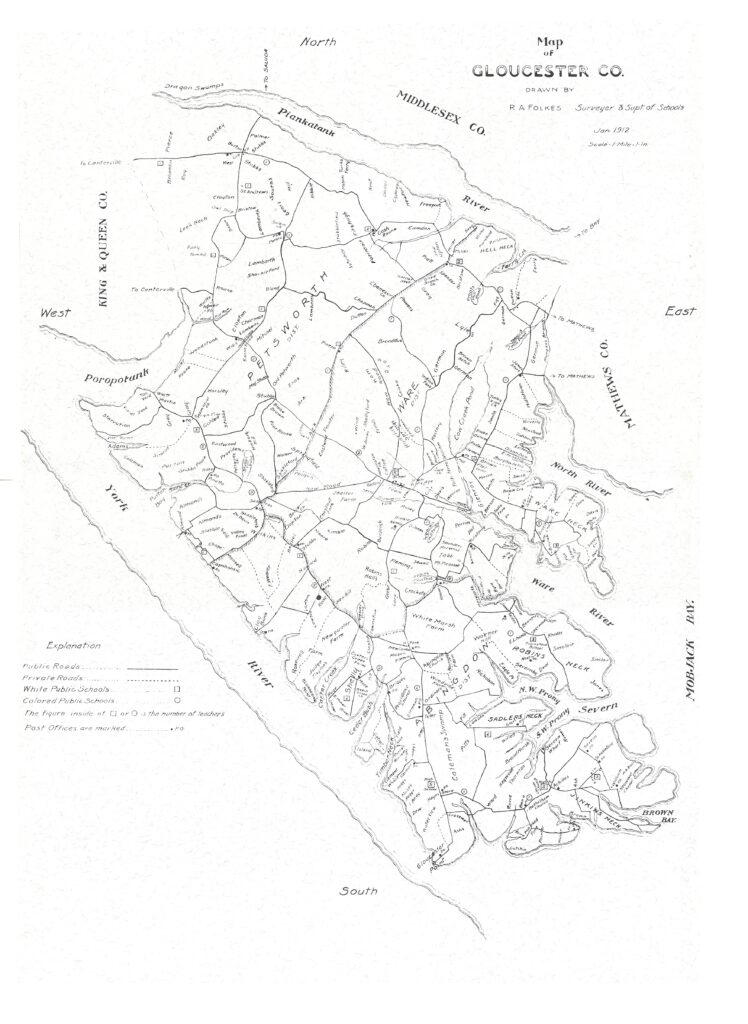
Despite this large number of early schoolhouses, only three schools from pre-1950 are still standing in Gloucester that we are aware of: two are private homes and one, the Woodville School, is restored. Many of the modern schools in Gloucester are also standing on or near the location of earlier schools, but the histories of these places are not well-known beyond the surviving descendants who went there.
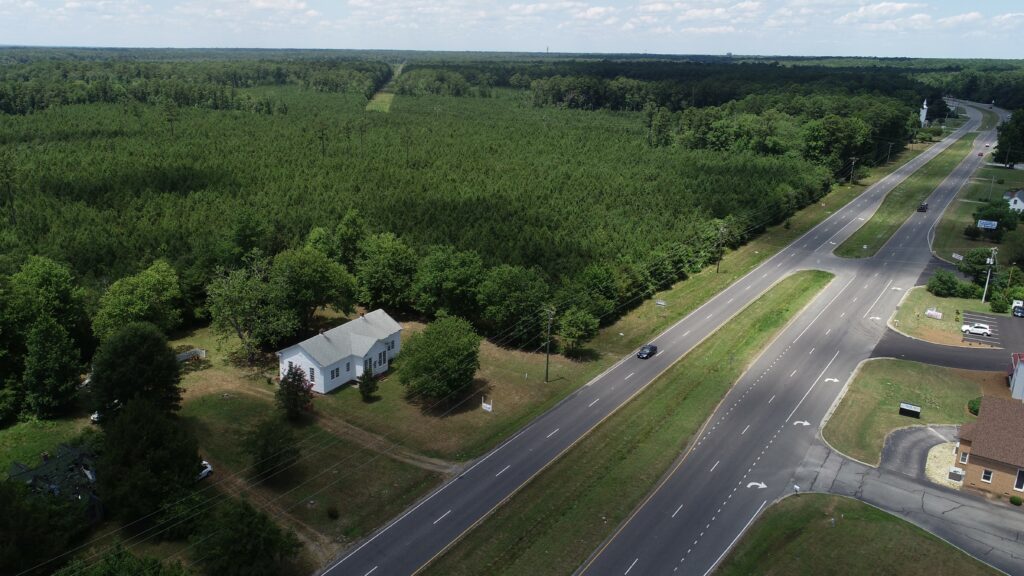
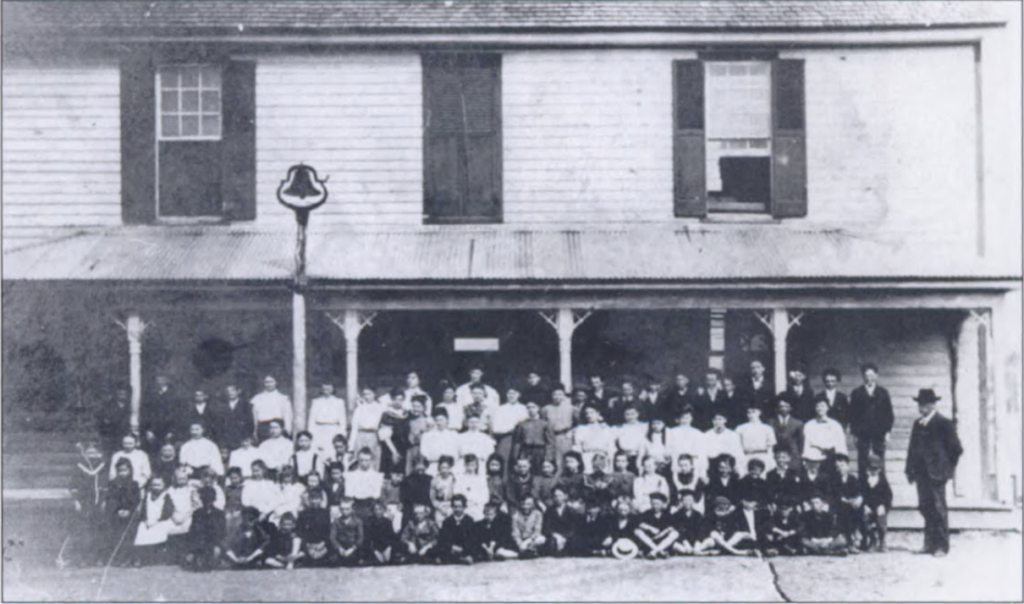
For my dissertation, I am looking at the archaeology and history of four schoolhouses in Gloucester. In order to properly understand these schools, I needed to understand the context in which they existed – the public school system in Gloucester. To do that, I set out to locate all of the public schools in the county between 1871 and 1960.
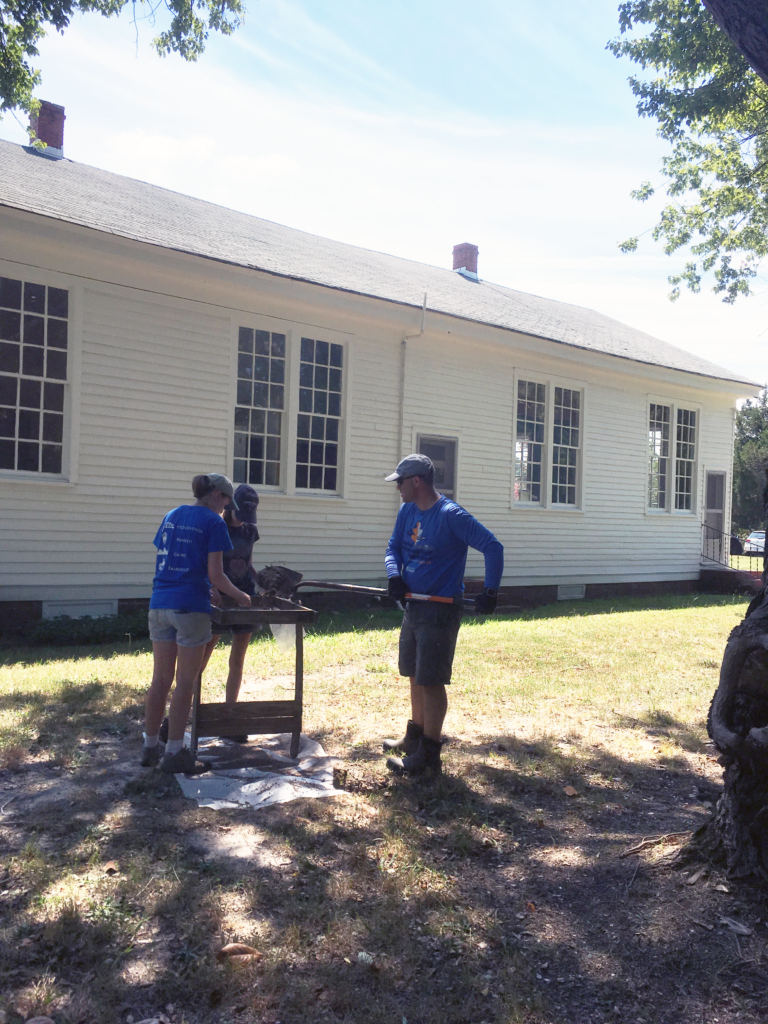
With the help of a few talented high school interns, we recorded all of the purchases and sales made by the Gloucester County School Board and trustees found between 1871 and 1960 that were recorded in the deed books in the Court House. Along with mentions of schools in Superintendent’s reports, school board records and newspapers, it appears that Gloucester had over sixty public schools during this period. Using this information, along with the 1912 Folkes map and the USGS maps from 1915 that exist for half of Gloucester County and show school locations, I attempted to find the modern parcels where these historic schools were located.
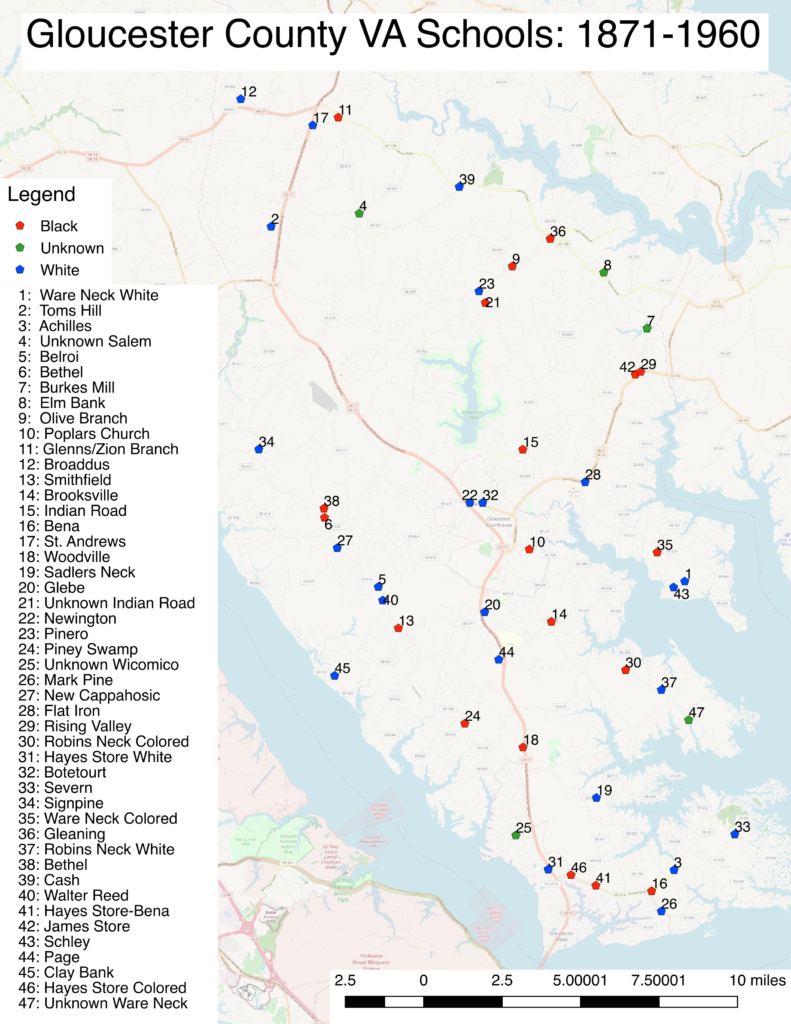
Some of the schools were easy to locate because the parcels today remain exactly the same as shown on the historic plat, such as the location of the Bena-Hayes Store Rosenwald School, or because the land is still owned by the person the school board sold it to in the 1930s and 1940s, such as the Bethel Rosenwald School. For other schools, I could only pinpoint the general location because road and property boundaries have changed dramatically or were too vague to locate. Currently, I have located 47 schools either to an exact parcel or within one or two parcels, but there are still many more locations to be found.
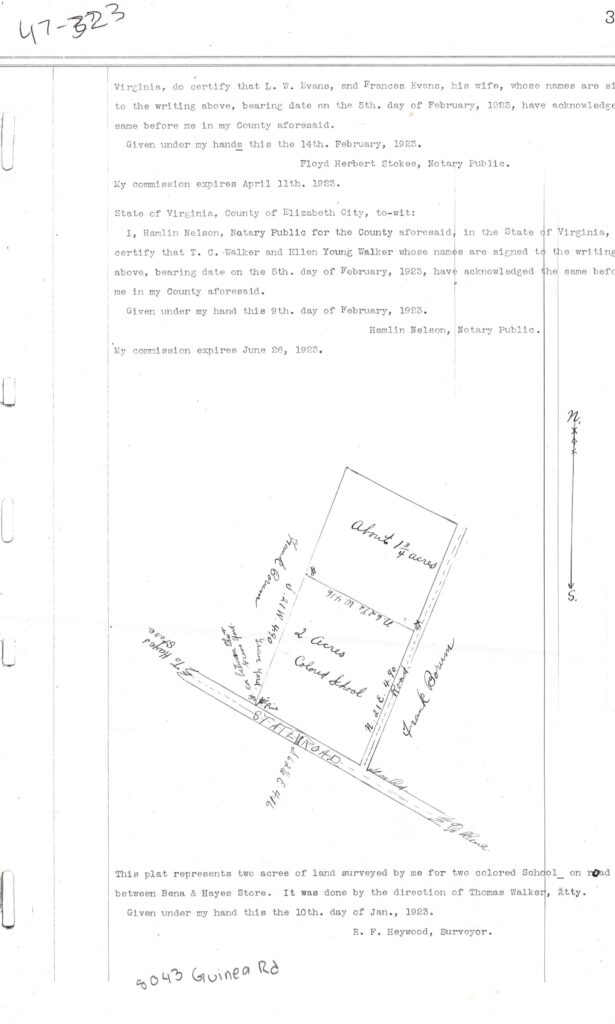
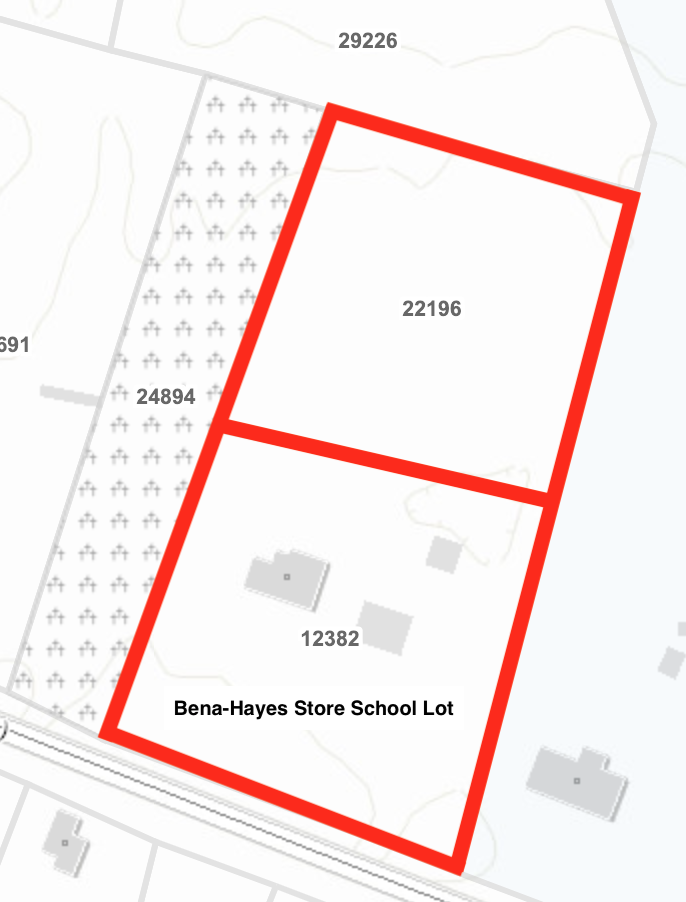
very similar for the Ben-Hayes lot since 1923
Following the success of this project in Gloucester, the Fairfield Foundation decided to expand this research to the neighboring counties of Mathews and Middlesex. Currently the research in Middlesex is ongoing thanks to the help of a community volunteer, Deborah Butler. While we haven’t gotten to all of the deeds yet, we have been able to locate 28 schoolhouses in Middlesex so far. A handful of these are still standing, including the Union Shiloh Rosenwald, the Antioch School, and the Rappahannock School. The research in Middlesex has thus far been as as fruitful as Gloucester in being able to locate schools, and we hope that Mathews will be the same.
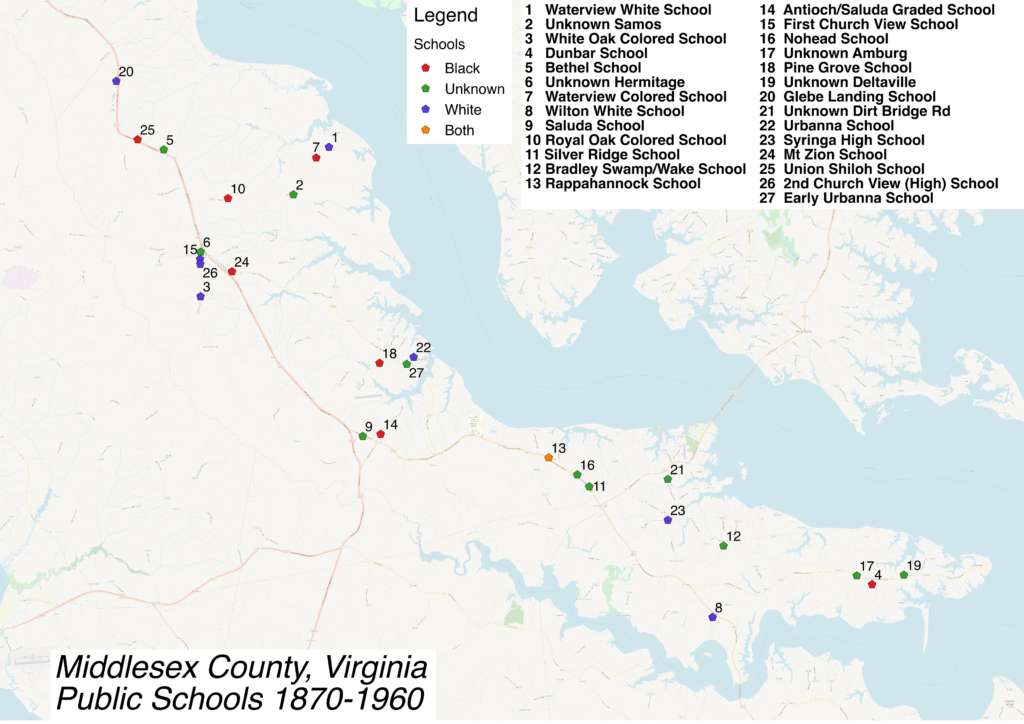
Map of Middlesex Public School locations from 1870-1960; Colleen Betti 2019
As useful as the deed books and other publicly-accessible historical records are, some of the most valuable information on these schoolhouses comes from you, the community, former students, and descendants of those who founded and attended these schools. Over the next couple of months, we will be featuring a schoolhouse each week on our Facebook page, sharing any locational information, photos, the historic the name of the school, etc. We hope that you or someone you know may have additional information about schools in Gloucester, Mathews, or Middlesex that you would be willing to share that with us.
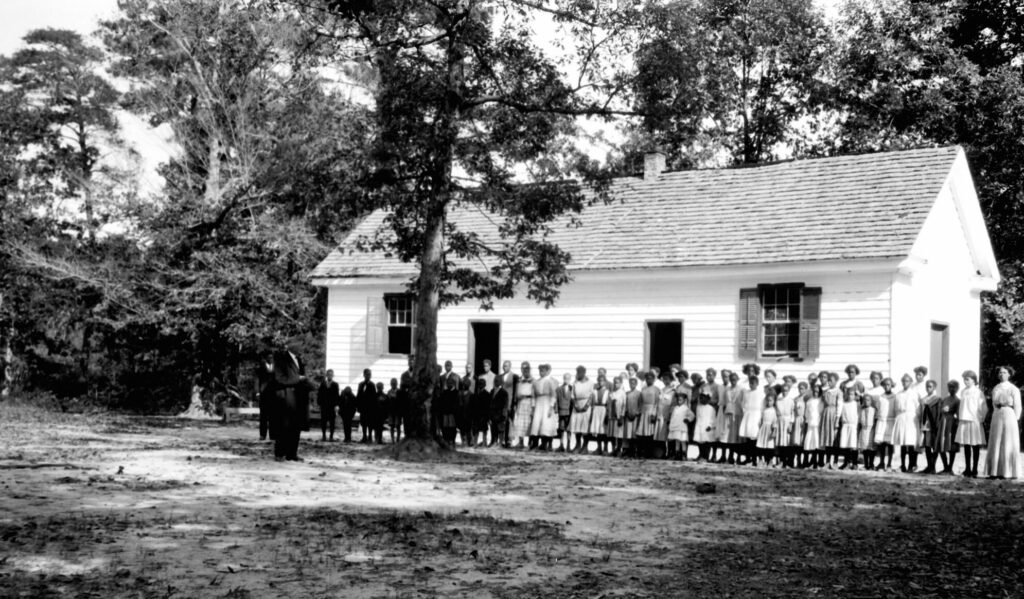


Hey, it’s a long shot. But I believe your claybank schoolhouse location sits right on the property of the house I just purchased. If you ever want to dig, search or come see…let me know.
-current history major dropout
Should the preservation of archeological sites be paid for by the land owners? Does the zoning commission as the enforcing body of unpublished information in the form of deeds and surveys that provide restrictions far above the standards of the state or national historic society.
The same values that cause people to take down statues that do not relate to them should allow funds for the archlogical exploration of colonial slaves that would have some value by others. Do Black Lives Matter?